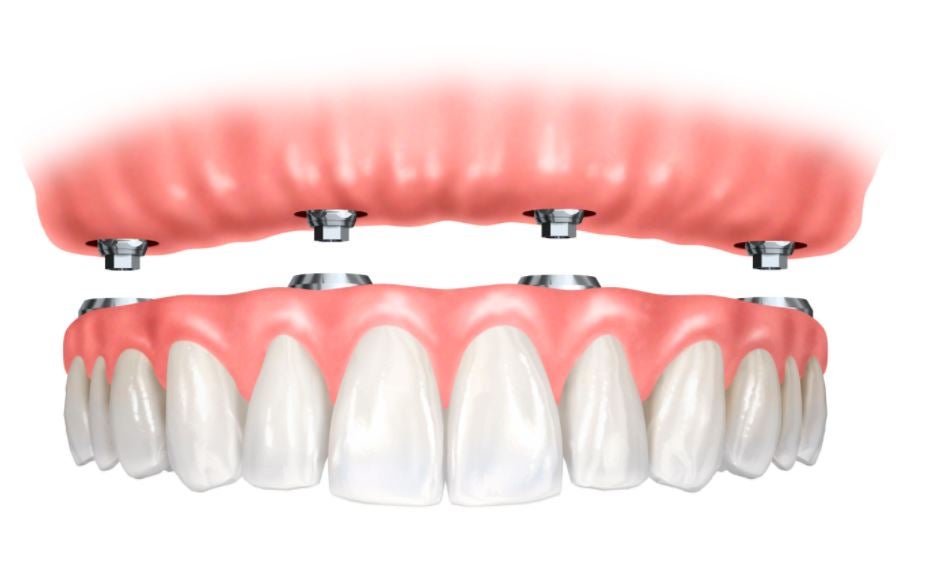Indicators on Dental Sense You Should Know
Some Of Dental Sense
Table of Contents6 Simple Techniques For Dental SenseDental Sense Things To Know Before You Get ThisThe Best Guide To Dental SenseMore About Dental Sense
are clinical gadgets surgically dental implanted into the jaw to restore an individual's capability to chew or their look. They give assistance for fabricated (fake) teeth, such as crowns, bridges, or dentures. When a tooth is lost because of injury or illness, a person can experience issues such as quick bone loss, defective speech, or modifications to eating patterns that lead to pain.Dental implant systems contain a dental implant body and dental implant abutment and might also include an abutment fixation screw. Professional teeth whitening. The oral implant body is surgically put in the jawbone in location of the tooth's origin. The dental implant abutment is usually affixed to the implant body by the joint addiction screw and expands via gums right into the mouth to support the attached synthetic teeth
(https://share.evernote.com/note/12f780ae-8ad1-693d-87b6-b9c57ca5907c)Structure of The Oral Implant System picking oral implants, talk with your dental provider about the prospective advantages and dangers, and whether you are a candidate for the treatment. Points to think about: Your total wellness is an essential aspect in identifying whether you are a good candidate for oral implants, how long it will require to recover, and how much time the dental implant may stay in area.
Cigarette smoking may affect the healing procedure and lower the long-term success of the implant. The recovery procedure for the implant body might take numerous months or longer, throughout which time you commonly have a temporary joint in area of the tooth. the oral implant procedure: Meticulously adhere to the dental health instructions offered to you by your oral service provider.
Dental Sense Fundamentals Explained
Implant failing can lead to the need for another medical treatment to fix or replace the dental implant system. Recovers the capacity to eat Recovers cosmetic appearance Aids keep the jawbone from reducing because of bone loss Protects the health of the bordering bone and gums Aids keep adjacent (nearby) teeth secure Enhances lifestyle Damages to surrounding natural teeth throughout implant positioning Injury to the surrounding tissues throughout surgical treatment, such as sinus perforation Injury during surgical procedure (for instance, fracture of surrounding jawbone) Poor feature, such as seeming like the teeth do not bite together normally A feeling that the tooth hangs or turning in location resulting from an abutment screw loosening up Implant body failure (looseness of the implant body) as a result of systemic infection, which may be more probable in people with unrestrained diabetes due to local infection in bone and gums supporting the dental implant body as a result of delayed recovery, which might be extra likely in patients who smoke Problem cleaning the periodontals around the dental implant, leading to inadequate dental hygiene Without treatment periodontal disease Post-surgical tingling as a result of nerve impingement or damages Constantly notify wellness treatment companies and imaging service technicians that you have dental implants before any kind of magnetic vibration imaging (MRI) or x-ray procedures.
FDA is not familiar with any type of negative events reported for MRI or x-ray treatments with oral implants. Oral implants systems are typically made of materials that comply with worldwide consensus criteria of the International Company for Standardization (ISO) or ASTM International. These requirements have information of what makes a risk-free product.

An oral implant is a framework that changes a missing tooth. With screw-like devices, the cosmetic surgeon inserts an implant right into the jawbone, and it functions as an anchor for a man-made tooth, called a crown. A gadget called a joint attaches the synthetic tooth to the dental implant. The crown is customized to fit the individual's mouth and match the color of their teeth.
Dental Sense for Beginners
Some people are not qualified for dental implant surgical procedure. It is for oral cosmetic surgeons to operate people with: intense illnessuncontrollable metabolic diseasebone or soft cells disease or infectionIf these problems are resolved, an individual can have the surgery. In, dental specialists avoid from operating people with: If individuals with any one of the above undergo oral implant surgical procedure, there is Your Domain Name a greater danger of the dental implant failing.

Dental dental implant surgery is a tailored procedure. It's not the same for everyone. The following provides a general overview of what you can anticipate your dental professional, dental doctor, periodontist or prosthodontist to do: Put the dental implant operatively. Give you time to recover. Connect the post and final crown, bridge or denture.
Next, your doctor will meticulously put the dental implant right into your jaw. Ultimately, your doctor will rearrange your gum tissues and shut the incision with stitches. If your dental implant is near the front of your mouth, your dental practitioner will make a short-term tooth for you to wear up until you recover. In this way, you won't have a space in your smile while you recover.
Dental Sense for Beginners
During the healing stage, your jawbone should fuse to the dental implant. This process can take anywhere from three to nine months.
Once your dental implant heals, your dentist can connect the abutment (tiny adapter message) and your last remediation (crown, bridge or denture). This normally takes about one hour to complete and might require a 2nd small surgical treatment. You shouldn't feel any kind of discomfort throughout your dental implant procedure due to the fact that your copyright will certainly use drug to numb your gums.